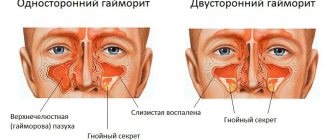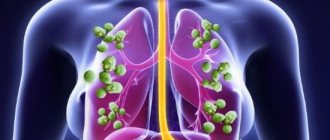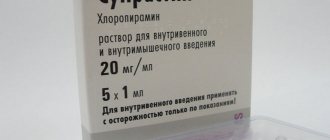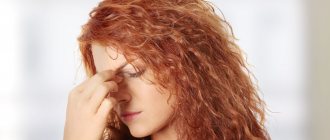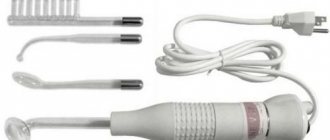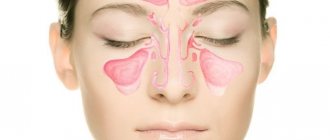How does left-sided and right-sided sinusitis develop?
The maxillary sinuses of the nose are covered with a thin membrane that produces mucus. Usually this mucus drains through small holes into the nasal cavity. Sinusitis begins when this drainage system becomes blocked, usually due to inflammation caused by infection or allergies. Soon there is pressure or pain in the face, and viscous mucus clogs the nose. Then the inflammation becomes purulent.
A person has 2 maxillary sinuses, which are located above the upper jaw on both sides of the face. If the inflammatory process covers one of them, then sinusitis is called unilateral. According to statistics, it is less common than bilateral.
Initially, the disease occurs in an acute form, which lasts about 1-2 weeks and then completely disappears. Those who experience the disease over and over again are at risk of developing chronic inflammation. Chronic sinusitis is harder to suspect because it goes unnoticed. Sometimes even long-term complex therapy does not help to eliminate it once and for all.
With unilateral sinusitis, mucus accumulation occurs in one maxillary sinus
The main differences between unilateral sinusitis:
- its symptoms occur only on one side and are of a lower severity;
- the duration of the disease is usually shorter;
- it is 2 times less likely to become chronic and cause the formation of polyps than bilateral sinusitis.
If you do not take measures to treat sinusitis (right-sided or left-sided), it can turn into double-sided.
Complications and consequences
Chronic bilateral sinusitis is insidious in its consequences. The sinuses are “neighbors” of the brain, so infection can quickly reach its membranes. As a result, the patient is diagnosed with meningitis.
In addition, advanced forms of bilateral sinusitis are often complicated by:
- neuritis of the facial and optic nerve;
- phlegmon of the eye orbit;
- pathological breathing disorder, which leads to oxygen deficiency in tissues;
- periostitis (inflammation of bone walls);
- thrombosis of orbital veins;
- sepsis;
- eustachitis (inflammation of the auditory tube);
- otitis media
A long course of the disease is fraught with decreased sense of smell and rapid fatigue.
A timely visit to an otorhinolaryngologist and competent treatment for the acute form of the disease will improve the patient’s condition already on the 5th day. After 10 days, as a rule, the patient fully recovers.
Causes of right-sided and/or left-sided sinusitis
Right-sided or left-sided sinusitis develops mainly for the following reasons:
- infection by bacteria or fungi. Harmful microorganisms enter the nose along with the air. You can also become infected while swimming in a pond or pool;
- penetration of infection from teeth. The maxillary sinuses are in close contact with the upper teeth, so caries or periodontal disease can lead to odontogenic sinusitis. Also, the sinus wall can be damaged during dental surgery;
- individual anatomical or physiological features that to some extent prevent free drainage from the sinuses. The most obvious example of this is a deviated nasal septum. Not everyone knows that they have problems with their nasal septum because it may not be noticeable. But such a pathology can provoke stagnation of mucus in the sinus, and in such an environment bacteria begin to actively multiply.
A cold, runny nose or allergies more often provoke bilateral inflammation, but the development of unilateral sinusitis cannot be ruled out for these reasons.
The main factor that contributes to the occurrence of sinusitis and many other ENT diseases is poor body defense. In people with strong immune systems, the infection is likely to be suppressed.
Classification of the disease
Symptoms of bilateral sinusitis can manifest themselves in acute or chronic forms.
Acute bilateral sinusitis has a rapid onset and violent symptoms, but it ends in 1-4 weeks, depending on the treatment provided and the patient’s immunity status.
Chronic bilateral sinusitis is rarer. It often occurs due to the fact that the disease was not treated at the acute stage or due to incorrect therapy. This is a running option, the duration of which is more than two months. During exacerbations, its symptoms are almost identical to those during acute inflammation, but when remission occurs, it is difficult to suspect the disease.
Theoretically, there is also subacute sinusitis (a transitional stage from acute to chronic) and recurrent sinusitis (repeated 4-5 times a year).
Depending on the cause, sinusitis can be:
- viral (occurs when infected with influenza or ARVI);
- bacterial (its causative agents are bacteria, such as staphylococci or streptococci);
- fungal bilateral sinusitis is provoked by pathogenic fungi;
- allergic (results from an allergic reaction);
- traumatic (may appear due to injuries affecting the sinuses).
Bilateral maxillary sinusitis in all of the above-described manifestations can occur in adults and children starting from 3 years of age.
Also, bilateral sinusitis is classified according to the nature of inflammation into:
- Exudative. Accompanied by the release of serous, mucous or purulent exudate. Usually at the beginning the disease is catarrhal, after a couple of days it becomes serous, and the last stage is purulent.
- Hyperplastic. With this form of chronic sinusitis, the mucous membrane becomes so inflamed that it increases in size and makes breathing difficult.
- Polypous. This form is accompanied by the appearance of polyps.
- Atrophic. It suggests the presence of deep, ineradicable changes in the nasal mucosa.
These are the most common options. Often several types occur together in one patient. There are also rarer forms of sinusitis, such as cystic, vasomotor and cholesteatoma.
Symptoms and manifestations of sinusitis on one side of the nose
The maxillary sinuses are located under the eyes. With sinusitis, pressure or pain is felt in this area. Swelling can make it difficult to breathe through the nose and impair your sense of smell. Rhinorrhea is also a mandatory symptom. The discharge may be thin, clear, or viscous and purulent. Remember that the symptoms of right-sided sinusitis are present on the right side of the face, and those of left-sided sinusitis are present on the left.
Other signs and symptoms of a maxillary sinus infection include:
- fever;
- redness and swelling around the eyes and cheek area;
- pain in the upper teeth;
- cough;
- fatigue;
- halitosis
Symptoms of unilateral sinusitis can mimic various diseases, including toothache or migraine. To make a diagnosis, it is advisable to consult a specialist.
Symptoms of bilateral sinusitis
Since it is severe and has a large area of inflammation, it has quite a lot of symptoms. As a rule, for all types of sinusitis there is one set of symptoms. The main symptom is the appearance of a headache that gets worse with changes in the position of the head, viscous, purulent mucus flowing from the sinuses, and difficulty breathing.
Also accompanying the course of the disease:
- General malaise: weakness, loss of appetite, drowsiness, chills.
- Fever: about 38-39° C.
- Change in voice timbre, appearance of nasality.
- Toothache.
- Painful sensations when pressing in the central part of the cheek and around the eyes.
- Swelling of the face.
- Redness of the mucous membranes of the eyes and nose.
If the pain only gets worse and the temperature lasts for about 3-5 days, then you should urgently see an otolaryngologist. He diagnoses the disease, the characteristics of its course and prescribes competent treatment. Among the prescribed medications, antibiotics will necessarily be prescribed.
How to detect unilateral sinusitis?
Initial diagnosis of any type of sinusitis is based on clinical symptoms and physical examination, including external examination, palpation and rhinoscopy. If this is not enough to make a diagnosis, the doctor may prescribe an x-ray examination and bacteriological analysis.
If symptoms persist or return more than once, you may have chronic sinusitis. This is a more complex disorder that requires a more detailed evaluation by an ear, nose and throat specialist. It may be necessary to undergo a computed tomography scan of the nose and sinuses or an endoscopic examination. Allergy tests may also be required.
Treatment of unilateral sinusitis: medication, physical therapy procedures
To cure right- or left-sided maxillary sinusitis, it is necessary to eliminate factors that may interfere with the normal outflow of mucus from the sinuses. That is, if there are polyps in the nose, they are removed, and a crooked nasal septum is straightened. If sinusitis is caused by an allergy, then it also needs to be treated or allergic reactions prevented. If the cause of sinusitis is dental disease, then be sure to get treatment from a dentist.
Antibiotics for right-sided and left-sided sinusitis are not always needed. They are prescribed if the patient has purulent discharge or in cases where symptomatic therapy does not produce results.
First of all, patients are prescribed amoxicillin or amoxicillin in combination with clavulanate (Augmentin). A 5-day course of Azithromycin also works well. If there is no improvement after several days of taking antibiotics, the prescription should be reconsidered. You may need another drug (in particular, the latest generation cephalosporins) or further diagnostics. Antibiotics are given for 10 to 14 days, but trials show that in some cases three to seven days is sufficient.
There are nasal medications with antibiotics (Isofra, Polydexa). Their effectiveness is not high, so they are used only as an additional means.
Most people with acute sinusitis recover without antibiotic treatment.
In any case, the following tips will help relieve symptoms and reduce the likelihood of complications:
- several times a day, use saline sprays to cleanse the nose (Aqua Maris, Aquazolin, Nazomarin Dr. Theiss, etc.). You can also rinse your nose with salt;
- purchase an anti-inflammatory agent, for example, Nasonex spray, Flix spray, Nasobek;
- to temporarily relieve nasal congestion and runny nose, use vasoconstrictor drops - Nazol, Dlynos, Rinazal, Nazolong;
- To relieve pain, use painkillers based on Ibuprofen (Ibuprom, Neofen), Nalgesin or Analgin. Paracetamol also has an analgesic effect;
- Zirtec, Zodak, Cetrin tablets will help eliminate allergy symptoms;
- To remove mucus from the sinuses, use the drug Sinuforte. It is designed specifically for the treatment of sinusitis.
The listed medications help with both acute and chronic maxillary sinusitis, but it may take months to cure the chronic form.
Treatment of right-sided sinusitis does not differ from the treatment of left-sided sinusitis. Whichever sinus is inflamed, you need to inject medications into both nostrils.
If the patient complains of severe pain and at the same time has a very high fever or swelling of the face, treatment should be carried out in the hospital!
For patients who often suffer from sinusitis, a course of physiotherapy (for example, UHF or magnetic therapy) may be prescribed. Such procedures affect the tissues of the nose and its sinuses, helping to eliminate swelling, pain and runny nose. Some have bactericidal properties.
How to treat left-sided sinusitis if it has become chronic? For prolonged sinusitis, rinsing using the “cuckoo” method is effective. During this procedure, it is possible to wash away contaminants from the nasal passages and achieve disinfection, thereby reducing the severity of inflammation.
One of the most radical methods of treating unilateral sinusitis is sinus puncture. After the puncture, the maxillary sinuses are freed from pus and dried mucus, and then antibacterial and anti-inflammatory agents can be injected into its cavity.
How to treat bilateral sinusitis
To select treatment methods for bilateral sinusitis, the patient is examined not only by an otolaryngologist, but also by a neurologist, dentist, and allergist. Only comprehensive treatment of inflammation will help cure acute bilateral sinusitis.
Drug treatment
Depending on the cause of bilateral sinusitis, medications are also selected.
The viral and bacterial nature of inflammation is suppressed by a group of antibiotics:
- Macrolides are active against bacteria that cause infections, including bilateral maxillary sinusitis. Among the drugs are Erythromycin, Azithromycin and Clarithromycin. They are effective against pathogens of respiratory infections. Antibiotics penetrate into the site of inflammation, affecting bacterial cells for a long time.
- Beta-lactam antibiotics inhibit the growth and development of bacteria and microscopic fungi. At the present stage of development of medicine, these drugs form the basis of antimicrobial therapy for sinusitis. The drugs in this group are effective against staphylococci, streptococci and pneumococci. The drug Augmentin is administered intravenously when sinusitis has become severe.
- Cephalosporins are used to treat acute bilateral sinusitis. Since antibiotics have a significant effect on intestinal function, they are not prescribed to a child under three years of age. In pediatrics, Cefalotin and Cefazolin are used to treat sinusitis, which are safe for the child’s body. For severe purulent inflammation, Ceftriaxone is used.
See also
How to use Vishnevsky ointment at home in the nose when treating sinusitis
Read
Macrolides are preferred in the treatment of sinusitis. For a child, such forms of medicine are chosen as suspensions, for an adult - tablets, capsules.
Symptoms of bilateral sinusitis are relieved:
- analgesics;
- anti-inflammatory drugs;
- antihistamines such as Suprastin, Tavegil;
- vasoconstrictor drops and spray;
- rinsing the nose with saline solutions.
Miramistin ointment will help ease nasal breathing for a child. To strengthen the immune system, herbal preparations based on ginseng and echinacea are prescribed. Children with sinus inflammation should receive vitamins to provide protection against infection.
Physical treatments
Physiotherapy plays a significant role in the treatment of bilateral maxillary sinusitis. Physical treatment methods are varied:
- Drainage cleans the maxillary sinuses and ethmoid bone cells from accumulated pus and mucus. Antiseptics are injected into the patient's nostril using a syringe or catheter and the air in the adjacent cavity is rarefied with an electric suction. The procedure is carried out within fifteen minutes. Miramistin and Furacilin are used as a washing solution.
- The sinus catheter method makes it possible to rinse the paranasal sinuses on both sides. A non-puncture method of treating inflammation is often used for bilateral sinusitis, as it is safe and gives a positive therapeutic result.
- Delivery of antibiotics to the site of inflammation is carried out by electrodes during electrophoresis and phonophoresis sessions.
- In the initial stages of bilateral sinusitis, laser therapy is performed. Before the procedure, the nasal canals are washed. During the session, a device with gel-neon radiation is used. The rays penetrate into the deep layers of tissue, blocking the spread of inflammation from the sinuses to neighboring areas. The probe, together with a microcamera, is inserted into the nasal passages, treating the mucous membrane, removing polyps and cysts in the maxillary sinuses.
- An ultrasound therapy device is used to target the area of inflammation of the nasal sinuses. After the procedure, the capillaries expand and their permeability increases. The therapeutic effect is achieved by stimulating tissue metabolism of the mucous membrane and eliminating swelling in the sinuses.
Physiotherapy helps to cope with bilateral sinusitis in adults and children in a short time.
Traditional therapy in the fight against unilateral sinusitis
At home, you can use some available remedies to relieve the symptoms of the disease:
- steam inhalation. Take some boiling water in a large bowl and inhale the steam coming out of it. Drape a towel over your head to trap the steam. Do inhalations several times a day for a week. It is recommended to add a couple of drops of eucalyptus essential oil to the water;
- Brew tea with a little turmeric and ginger root. This combination helps reduce the viscosity of mucus and remove it from the nasal passages, reduce pressure and improve the patient’s well-being;
- rinse your nose with a decoction of herbs - chamomile, mint, sage (be sure to strain the decoction thoroughly before using). Hydrogen peroxide is also used to rinse the nose; it corrodes purulent accumulations well and kills germs;
- Garlic is an antibiotic in nature and is very useful in fighting various respiratory infections. You can use it to make ointment or nasal drops.
In parallel with the treatment of sinusitis itself, it is necessary to strengthen your immunity. The safest means for immunotherapy are echinacea and vitamin C. During treatment, try not to drink alcohol or breathe cigarette smoke!
Symptoms of the disease
The clinical manifestation of the disease is associated with the nature of the course and form of the disease.
The catarrhal form of the acute process is characterized by elevated temperature, headaches, and prolonged nasal congestion. The symptoms are similar to a respiratory infection, so patients do not seek medical help, trying to eliminate the symptoms on their own. Mucous discharge from the nose without foreign impurities and a characteristic odor is a fundamental symptom.- Sinusitis of purulent form has a clear clinical picture: Hyperthermia up to 40 0C;
- Fever;
- Chills;
- Acute pain in the frontal region;
- Swelling of the eyelids;
- Pain on palpation of the maxillary sinuses;
- Swelling and external hyperemia of the skin located near the wings of the nose;
- General malaise;
- Photophobia;
- Mucus with streaks of pus and a thick consistency appears from the nose. It often has a greenish tint and a putrid odor.
A distinctive feature of bilateral sinusitis is the presence of inflammation in each paranasal sinus, that is, signs of the disease develop synchronously: both on the left and on the right.
In contrast to the acute process, the chronic nature of the course is distinguished by the meager manifestation of symptoms. It is characterized by the following symptoms:
Malaise;- Low-grade fever;
- Periodic nasal congestion.
The chronic nature of the course is easier, but during the period of exacerbation, symptoms similar to catarrhal acute sinusitis appear.
Complications of left-sided and right-sided sinusitis
The most likely complication of poorly treated sinusitis is the transition of the disease to a chronic form and the subsequent formation of polyps or cysts. These growths interfere with normal breathing and often require repeated surgical removal.
Also, due to sinusitis, the olfactory function may suffer. In rare cases, infection from the maxillary sinuses spreads to other parts of the face, causing suppuration under the skin, in the eye and brain. Sometimes the inflammation spreads to the bones.
Facial swelling, fever, chills, and changes in vision may indicate complications. If you experience these symptoms, you should seek help immediately.
Symptoms of sinusitis in adults
The signs and symptoms of unilateral sinusitis in the initial stage are similar to colds. The patient complains of a runny nose, general malaise, fatigue, and drowsiness.
You might be interested in the article - When does a cough occur with sinusitis and what needs to be done?
A few days later the clinical picture is observed:
- As evening approaches, pain in the nose and sinuses increases. During the day, the discomfort subsides.
- Headaches extend to the front of the head.
- The pain spreads to the cheekbone, eye socket, teeth.
- Blinking, the patient feels discomfort, while the eyelid becomes red and the eye swells.
- The nose is blocked on one side, and a purulent formation flows from the sinus.
- Mucus drips down the back of the throat.
- Blood clots are observed in mucous secretions.
- The voice becomes nasal.
- Body temperature rises.
- The patient suffers from insomnia due to poor health.
Good to know - What is the duration of treatment for sinusitis?
With proper therapy by the treating doctor, the disease disappears after 10-14 days. When the unilateral form of the disease becomes chronic, the patient feels a dry throat. Crusts appear in the nasal passages. Patients often develop chronic conjunctivitis. Nasal congestion periodically moves from one side to the other. An otolaryngologist will tell you how to treat unilateral sinusitis after a full examination.
How to avoid getting unilateral sinusitis?
There are many ways to help reduce the likelihood of developing left-sided and right-sided maxillary sinusitis:
- Clean your nasal passages daily with a saline spray;
- Get regular check-ups with your dentist;
- perform periodic steam inhalations;
- sleep with your head elevated - this way the mucus will flow down and not stagnate in the sinuses;
- Be careful when blowing your nose, clean each nostril in turn.
And finally, be careful with vasoconstrictors. They do not cure sinusitis, and long-term use increases the risk of dependence, and increased swelling of the mucous membrane will occur each time the medicine stops working.
Be healthy!
Classification and types of disease
The disease can be divided according to a variety of criteria. The first and main basis for classification is the nature of the pathological process.
Accordingly they talk about:
- Infectious or bacterial sinusitis. It is provoked by protozoan microorganisms.
- Viral disease. Strictly speaking, viruses are not microorganisms and flora, since they do not belong to living nature.
- Fungal origin of the disease. The disease is caused by candida fungi. Other types of mycoses may occur.
- Autoimmune pathology. This is the so-called allergic sinusitis.
The second basis for classification is the nature of the pathological process.
The following forms of the disease can be distinguished:
- Catarrhal sinusitis. A lot of mucus comes out, but it is transparent. The predominant symptom is nasal congestion and bilateral disturbance of normal breathing.
- Polypous type disease. Special neoplasms—polyps—grow in the nasal passages.
- Adenoid nature of the disease.
- A dysplastic type of disease when atypical cells grow in the nose.
- Atrophic type of disease. With insufficient nutrition of the mucous membranes.
- Dystrophic form of the disease.
There is another classification that plays the greatest role in diagnosis and treatment - this is the form in which the pathology occurs.
